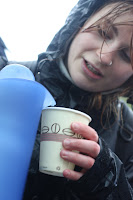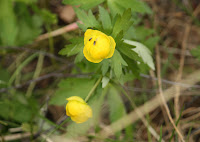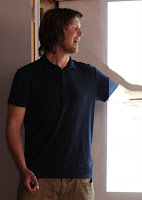Thank you to all participants, lecturers, organisation and partners of the summer school. Despite the density of the week and the diversity of subjects, this has been a great success that hopefully will enable future collaboration between France and Sweden
Abisko, 17-24 June 2010
17-24 June 2010
The Swedish Sub-Arctic and the Sub-Antarctic French territories provide important opportunities for comparisons and further scientific investigations.
In this regard, the 2010 summer school stands as a joint initiative of the French Polar Institute (IPEV) and the Swedish Polar Research Secretariat, the support of CNRS (the French National Center for Scientific Research) and the French Embassy in Sweden.
The summer school will offer the opportunity for scientists, young researchers and students to share their views and experiences on the climate change and impacts on sub-polar ecosystems, laying down the basis for future joint research.
Pages
Tuesday 29 June 2010
Wednesday, June 23rd
During the afternoon some of the participants decided to go hiking to Paddus.
Tuesday, June 22nd
This evening we had the last
group presentations. Group 4 is composed by Maria Ingimarsdóttir, Elefhteria
Palkopoulou and Artabaze Shams.
Wednesday 23 June 2010
Monday, June 21st

This day Sami knowledge and climate change in the Arctic were the main thematics. Marie Roué from the CNRS and the Museum of Natural History in France started by telling us about the traditional Sami life and what their problems could be if their conditions change. Marie Roué is an Anthropologist who has much experience of sub-arctic research.
Geir Rune Rauset, Florence Revelin and Hélène Subrémon, group 3, presented themselves and their research projects. The day summary was followed by a discussion about the researchers striving for objectivity and the relationship between human and nature.
Monday 21 June 2010
Sunday, June 20th

 Françoise Hennion followed by a lecture not about insects but about plants in the sub-antarctic regions. She mainly spoke about their response to climate change. Françoise Hennion is a CNRS (French National Center of Scientific Research) researcher.
Françoise Hennion followed by a lecture not about insects but about plants in the sub-antarctic regions. She mainly spoke about their response to climate change. Françoise Hennion is a CNRS (French National Center of Scientific Research) researcher. We spent the afternoon at the Stordalen Mire (Torneträsk lake) where Erik Lundin told us about his research on carbon turnover in subarctic aquatic systems. He showed us his measure instruments on field. Then, we met Patrick Crill who explained us the mechanisms of permafrost in the region.
We spent the afternoon at the Stordalen Mire (Torneträsk lake) where Erik Lundin told us about his research on carbon turnover in subarctic aquatic systems. He showed us his measure instruments on field. Then, we met Patrick Crill who explained us the mechanisms of permafrost in the region.Saturday, June 19th

Gunhild “Ninis” Rosqvist, head of the Department for physical geography and quaterny geology at Stockholm University
The last activity for this day was the student presentations. The turn had come to the group 2, which is composed of Elin Högström, Anouschka Hof and Mathieu Laparie.
Sunday 20 June 2010
Friday, June 18th
The day started with a lecture by Patrick Brouder about the Tourism and the climate change in Swedish mountains. Patrick Brouder is a PhD student at the Department of Geography in Umeå University. His research on Nature-based tourism is under the auspices of the Outdoor Recreation in Change (Friluftsliv i förändring) Programme which is supported by the Swedish Environmental Protection Agency (Naturvårdsverket).
Then we had a guided tour of Abisko facilities and outskirts with Lars Olof Björn. Lars Olof Björn is professor emeritus of Lund University and presently professor at the South China Normal University in Guangzhou. He knows Abisko well since many of his field experiments have been conducted at the Abisko Scientific Research Station.
After lunch we listened to Christine David from the IPEV (French Polar Institute) speaking about the importance of long term monitoring in Polar Regions through the example of ozone depletion. Christine David, recently appointed Deputy-director of the IPEV, the French Polar institute, but is still a scientist at the IPSL (Institut Pierre Simon Laplace), working on Stratospheric Ozone, Antarctic Stratosphere and its interactions with climate.
Leif G. Anderson, then, presented a lecture on Biogeochemical processes in the Siberian Shelf Sea and their implication for carbon fluxes. Leif G. Anderson is Professor in hydrosphere sciences at the Department of Chemistry at the University of Gothenburg. He was part of the ISSS (International Siberian Shelf Study) international research expedition including participants from Russia, Sweden, USA and other nations that travelled the length of the Siberian coast to the East Siberian Sea in August and September 2008.
The last thing we did this day was listening to group 1 student presentations. All students have been divided into four groups. Each group is responsible for summarizing one or two specific days activities after having presented themselves and their research projects. Group 1 is composed of Tim Horstkotte, Nathalie van der Putten and Erik Lundin.
Subscribe to:
Posts (Atom)


































